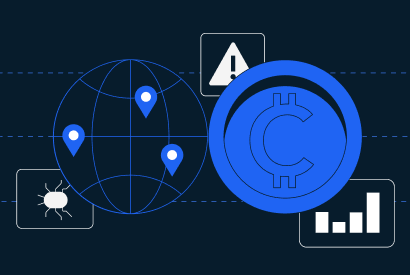Crypto Expert Predictions for Q2 2025: What Lies Ahead?

The world of cryptocurrency continues to evolve at a rapid pace. As we head into Q2 of 2025, analysts, economists, and industry veterans are weighing in with predictions that could shape strategies for crypto users, investors, entrepreneurs, and financial institutions alike. With macroeconomic uncertainty, regulatory developments, and technical innovation converging, it’s more important than ever to understand where the market might be heading.
This article dives into a range of expert perspectives to present a comprehensive and educational overview for anyone navigating the world of digital assets—from curious newcomers to seasoned crypto professionals.
1. The Big Picture: Bitcoin and the Macro Landscape

Bitcoin’s performance in 2025 highlights its increasing interplay with global macroeconomic conditions, institutional finance, and evolving geopolitical dynamics. Geoff Kendrick, head of digital asset research at Standard Chartered, recently made waves by predicting that Bitcoin could reach $120,000 by the end of Q2 2025, citing a convergence of factors that favor the world’s largest cryptocurrency. His forecast captures the maturing role of Bitcoin as both a hedge against economic instability and a digital asset positioned for mainstream integration.
Kendrick’s Prediction: A Perfect Storm for Bitcoin
Kendrick’s bullish outlook is supported by several macroeconomic and market trends:
- Economic Instability and Geopolitical Tensions: Rising inflation, tightening monetary policies, and geopolitical uncertainties—such as trade tensions and tariff wars—are pushing investors toward non-sovereign assets like Bitcoin. The U.S. Treasury term premium, a key indicator of demand for non-dollar assets, is at its highest in over a decade, further strengthening Bitcoin’s appeal.
- Institutional Acceptance and ETF Inflows: Bitcoin ETFs have seen record-breaking inflows, with BlackRock’s iShares Bitcoin Trust (IBIT) leading the market. In April 2025 alone, Bitcoin ETFs recorded $3 billion in weekly inflows, reflecting renewed institutional interest. Fidelity’s FBTC and other ETFs have also contributed to this momentum, signaling that institutional investors view Bitcoin as a strategic asset.
- Behavior as Digital Gold: Economists increasingly compare Bitcoin to gold, noting its role as a hedge against financial system risks. Recent ETF flows indicate a reallocation from gold to Bitcoin, highlighting its growing status as a safe-haven asset.
Key Data Points Supporting Bitcoin’s Momentum
- Record ETF Inflows: Bitcoin ETFs have become a cornerstone of institutional adoption. BlackRock’s IBIT now manages over $56 billion in assets, accounting for approximately 3% of Bitcoin’s circulating supply. This surge in ETF inflows reflects a broader shift in investor sentiment, with capital moving away from traditional assets like equities and gold.
- Active Bitcoin Addresses at Multi-Year Highs: The number of active Bitcoin addresses—those sending or receiving transactions—has reached its highest levels since 2021. This metric, a key indicator of network activity and user participation, suggests that Bitcoin adoption is expanding beyond institutional investors to include retail users.
- State-Level Interest in Bitcoin Reserves: Arizona recently passed a bill to allocate up to 10% of its $31.5 billion state reserves to Bitcoin and other digital assets. This move positions Arizona as the first U.S. state to formally integrate Bitcoin into its public financial strategy, potentially setting a precedent for other states8.
A Maturing Market with Strong Fundamentals
Experts suggest that Bitcoin’s current momentum is not merely a speculative bubble but a reflection of maturing market fundamentals. The combination of institutional adoption, state-level interest, and macroeconomic drivers underscores Bitcoin’s shifting role in the global financial paradigm. As Bitcoin continues to behave like digital gold, its integration into portfolios and public reserves could redefine its relevance in the years to come.
2. Ethereum: The Start of Utility Season?

Ethereum (ETH) is stepping into the spotlight for its utility-driven growth, marking Q2 2025 as the beginning of “utility season.” Unlike Bitcoin, which often dominates headlines due to its price movements and institutional adoption, Ethereum is gaining traction for its real-world applications. Analysts predict that tokens with tangible use cases—such as decentralized finance (DeFi), tokenized assets, and blockchain-based identity systems—will attract renewed interest and capital flows. Ethereum’s advancements in layer-2 scaling solutions and protocol upgrades are driving this transformation.
Layer-2 Scaling Solutions: Optimism and Arbitrum
Ethereum’s layer-2 scaling solutions are revolutionizing the network by addressing its long-standing scalability challenges. Platforms like Optimism and Arbitrum are enabling faster transactions and significantly reducing gas fees, making decentralized applications (dApps) more accessible to users.
Optimism
Optimism leverages optimistic rollups, which process transactions off-chain and only post final proofs back to Ethereum’s main chain. This approach ensures security while improving efficiency. Optimism has become a favorite among developers, particularly in the DeFi space, due to its compatibility with Ethereum’s existing infrastructure. In Q1 2025, Optimism reported a 38% increase in transaction volume, driven by adoption from major protocols like Curve Finance and Synthetix.
Arbitrum
Arbitrum, another leader in the layer-2 space, uses similar rollup technology but stands out for its simplicity and cost-effectiveness. The Nitro upgrade, launched in late 2024, further enhanced its throughput, making it ideal for high-frequency trading and gaming applications. Arbitrum’s transaction activity rose by 42% year-over-year, with projects like Uniswap v3 and dYdX adopting its technology.
These solutions are not only improving user experiences but also unlocking new possibilities for Ethereum’s ecosystem, from microtransactions to complex financial instruments.
Core Protocol Upgrades: Enhancing Efficiency and Security
Ethereum’s upcoming Pectra upgrade, scheduled for release on May 7, 2025, represents a major leap forward in network efficiency, scalability, and security.
EIP-7702 (Account Abstraction)
This upgrade introduces account abstraction, allowing externally owned accounts (EOAs) to temporarily run smart contract code. Features like transaction batching, gas sponsorship, and social recovery make Ethereum wallets more user-friendly and secure.
Layer-2 Scalability Enhancements
Pectra doubles the average number of blobs per block, increasing data throughput for rollups and reducing fees for layer-2 networks. This enhancement is expected to further boost adoption of platforms like Optimism and Arbitrum.
Validator Improvements
Validators can now stake up to 2048 ETH, simplifying large staking operations and boosting rewards without fragmentation. These changes incentivize participation and strengthen Ethereum’s proof-of-stake consensus.
With these upgrades, Ethereum is solidifying its position as the leading blockchain for decentralized applications, laying the groundwork for long-term adoption.
Real-World Applications: DeFi, Tokenized Assets, and Blockchain Identity
Ethereum’s utility extends far beyond its technical advancements. The network is driving innovation in real-world applications, particularly in DeFi, tokenized assets, and blockchain-based identity systems.
Decentralized Finance (DeFi)
Ethereum remains the dominant platform for DeFi, hosting protocols like Aave, MakerDAO, and Compound. These platforms enable users to access decentralized lending, borrowing, and yield optimization strategies. Ethereum’s DeFi total value locked (TVL) crossed $130 billion in March 2025, a 25% increase from the previous year.
Tokenized Real-World Assets (RWAs)
The tokenization of traditional assets, such as real estate, government bonds, and commodities, is one of Ethereum’s most promising use cases. By transforming these assets into blockchain-based digital representations, Ethereum is bridging the gap between DeFi and traditional finance. In 2024, Ethereum accounted for 75% of tokenized treasuries, a trend expected to continue as institutions prioritize security and interoperability.
Blockchain-Based Identity Systems
Ethereum is also leading the charge in digital identity solutions. Projects like BrightID and uPort are leveraging Ethereum’s infrastructure to create secure, user-controlled identity systems. These systems reduce risks like identity theft and fraud while empowering individuals to manage their credentials independently.
Building for Long-Term Success
Ethereum’s price movements may not rival Bitcoin’s explosive trends, but its utility-driven growth is becoming more evident. Analysts predict that Ethereum will play a pivotal role in shaping the next generation of blockchain-based innovations. With layer-2 scaling solutions, protocol upgrades, and expanding real-world applications, Ethereum is laying the groundwork for long-term success in a maturing crypto industry.
3. Altcoins: Divergence and Consolidation
As Q2 2025 unfolds, the altcoin market is experiencing divergence and consolidation, with projects showcasing mixed performance. While tokens with strong fundamentals and active development communities are holding steady, meme coins and speculative assets are facing sharp declines. This dynamic reflects a broader trend of flight to quality, as investors prioritize projects with real-world utility and robust ecosystems.
Solana (SOL): High Throughput and Strategic Partnerships
Solana continues to gain momentum due to its high throughput capabilities and strategic partnerships. Known for its proof-of-history consensus mechanism, Solana achieves transaction speeds of over 4,000 transactions per second (TPS), significantly outperforming Ethereum’s current capacity. This scalability has made Solana a preferred platform for DeFi applications and NFT ecosystems.
Recent Developments
- Network Upgrade: Solana’s community is deliberating a new upgrade to increase block limits, which could further enhance scalability and efficiency.
- Institutional Adoption: Tokenization platform Securitize has attributed BlackRock’s adoption of Solana to its low costs and high throughput, signaling growing institutional interest.
These advancements position Solana as a key player in the altcoin space, with analysts predicting a potential 150% price rally in Q2 2025.
Chainlink (LINK): Dominating the Oracle Space
Chainlink remains the leader in the decentralized oracle market, providing critical infrastructure for blockchain networks. Its hybrid smart contracts combine on-chain and off-chain data, enabling advanced functionalities like real-time data feeds, verifiable randomness, and proof of reserves.
Key Innovations
- Chainlink 2.0: The latest iteration of Chainlink’s decentralized oracle networks introduces enhanced scalability and confidentiality, supporting next-generation smart contract applications.
- Adoption Across Industries: Chainlink’s services are widely used in DeFi, insurance, gaming, and NFTs, securing billions of dollars in on-chain value.
With its expanding suite of decentralized services, Chainlink is solidifying its role as a foundational layer for blockchain ecosystems.
Avalanche (AVAX) and Cosmos (ATOM): Interoperability and Modular Chains
Both Avalanche and Cosmos are pushing the boundaries of blockchain interoperability, enabling seamless interactions between networks.
Avalanche
Avalanche’s high-performance blockchain is designed for decentralized applications (dApps) that require low latency and high throughput. Its Subnet architecture allows developers to create custom blockchains tailored to specific use cases. Despite market pressure, Avalanche continues to attract projects focused on DeFi and gaming ecosystems.
Cosmos
Cosmos is leading the charge in multi-chain expansion with its Inter-Blockchain Communication (IBC) protocol. This technology facilitates cross-chain transactions, ensuring that independent blockchains can interact efficiently. Cosmos is becoming a cornerstone for DeFi platforms, gaming ecosystems, and enterprise solutions.
Together, Avalanche and Cosmos are driving innovation in blockchain connectivity, making them standout performers in the altcoin market.
Regulatory Scrutiny: Flight to Quality
Regulatory scrutiny is tightening around altcoins, particularly those that may be classified as securities. In South Korea, new crypto laws could lead to the delisting of over 600 tokens that fail to meet compliance standards. Similarly, global exchanges are reassessing their listings, focusing on tokens with clear utility and robust governance.
Impact on the Market
This regulatory pressure is forcing a flight to quality, where investors and exchanges prioritize projects with long-term vision and real-world applications. Tokens with speculative or meme-driven narratives are increasingly being sidelined, creating a healthier and more sustainable market environment.
Focus on Quality and Utility
Experts recommend focusing on altcoins with strong fundamentals, active development communities, and real-world utility. Projects like Solana, Chainlink, Avalanche, and Cosmos exemplify these qualities, making them top picks for Q2 2025. As the market consolidates, this period may serve as a foundation for long-term growth rather than indiscriminate expansion.
4. Institutional Adoption and Strategy
Institutional involvement has emerged as one of the most significant drivers of cryptocurrency growth in 2025. From banks to pension funds, institutions are no longer cautiously experimenting with digital assets—they are actively integrating them into their long-term strategies. This shift is reshaping the crypto landscape, bringing both legitimacy and new challenges, such as the need for enhanced regulation, transparency, and infrastructure.
Key Developments in Institutional Adoption
1. BlackRock’s $1 Billion Bitcoin Acquisition
In April 2025, BlackRock, the world’s largest asset manager, made headlines with a $1 billion Bitcoin acquisition. This purchase was executed through its iShares Bitcoin Trust (IBIT), which has become a cornerstone for institutional Bitcoin exposure. Over three days, BlackRock accumulated 12,500 BTC, marking one of the largest single acquisitions by an institutional player.
This move underscores BlackRock’s confidence in Bitcoin as a store of value and portfolio diversifier, particularly in an era of economic uncertainty. CEO Larry Fink has previously highlighted Bitcoin’s potential to rival gold as a hedge against inflation and geopolitical risks. The acquisition also reflects growing demand for regulated Bitcoin investment vehicles, as IBIT continues to dominate the spot Bitcoin ETF market.
2. Fidelity’s Expansion into Crypto Custody and Staking
Fidelity, a pioneer in institutional crypto services, has expanded its crypto custody offerings to include staking. This move allows institutional clients to earn rewards by participating in the validation of blockchain networks, such as Ethereum’s proof-of-stake system.
Fidelity’s decision aligns with the increasing demand for yield-generating opportunities in the crypto space. By offering staking services, Fidelity is not only enhancing its product suite but also addressing a key pain point for institutions: the need for secure and compliant ways to engage with blockchain ecosystems.
3. Coinbase’s Institutional-Grade Tools and Research Support
Coinbase has solidified its position as a leader in institutional crypto services by launching advanced trading tools and research support. These tools include algorithmic trading capabilities, real-time market analytics, and risk management solutions, tailored to meet the needs of hedge funds, family offices, and corporate treasuries.
Additionally, Coinbase’s research division provides in-depth market insights, helping institutions navigate the complexities of the crypto market. This comprehensive approach has made Coinbase a preferred partner for institutions looking to enter the digital asset space.
The Broader Institutional Strategy
David Chen, CIO at a leading digital asset hedge fund, encapsulates the current trend: “The narrative is shifting. Institutions aren’t just dipping toes in anymore. They’re building strategy teams, hiring blockchain analysts, and investing for the long haul.” This sentiment reflects a broader shift in institutional behavior:
- Dedicated Strategy Teams: Institutions are forming specialized teams to explore blockchain use cases, from decentralized finance (DeFi) to tokenized assets.
- Long-Term Investment Horizons: Unlike retail investors, institutions are focusing on multi-year strategies, viewing crypto as a key component of future financial systems.
- Infrastructure Investments: Institutions are investing in the development of secure custody solutions, scalable blockchain networks, and regulatory compliance frameworks.
Legitimacy and Challenges
The growing institutional interest in crypto is a double-edged sword. On one hand, it brings legitimacy and stability to the market, attracting more participants and fostering innovation. On the other hand, it increases the need for regulation, transparency, and robust infrastructure. As institutions continue to shape the crypto landscape, their involvement will likely drive the next phase of market maturation.
5. User Adoption and Behavior Shifts

The evolution of user behavior in the cryptocurrency space is reshaping the industry, transitioning from speculative trading to practical, everyday use. In regions with unstable banking systems or high inflation, stablecoins like USDT and USDC are becoming indispensable for daily transactions. Meanwhile, the expansion of crypto payment options in e-commerce and the rising demand for self-custody wallets highlight the growing emphasis on access, control, and privacy.
Growth in USDT and USDC Usage in Latin America and Southeast Asia
Stablecoins have emerged as a lifeline in regions grappling with economic instability. In Latin America, countries like Argentina and Venezuela are leading the charge in stablecoin adoption due to rampant inflation and currency devaluation. According to Bitso’s Latin America Crypto Landscape report, stablecoins accounted for 39% of all cryptocurrency transactions on the platform in 2024, up from 30% the previous year.
- Argentina: USDT purchases represented 50% of all crypto transactions in 2024, reflecting the country’s reliance on stablecoins amid inflation rates exceeding 100%.
- Southeast Asia: In countries like Indonesia and the Philippines, stablecoins are increasingly used for cross-border remittances, providing faster and cheaper alternatives to traditional banking systems.
This trend underscores the role of stablecoins as a store of value and a practical medium of exchange in regions with volatile fiat currencies.
Expansion of Crypto Payment Options in E-Commerce and Retail
The integration of cryptocurrency into e-commerce and retail sectors is transforming how businesses and consumers interact. Platforms like Shopify, WooCommerce, and Overstock now support crypto payment gateways such as Coinbase Commerce and BitPay, enabling seamless transactions with Bitcoin, Ethereum, and stablecoins.
Key Benefits for Merchants
- Lower Transaction Fees: Crypto payments eliminate the high fees associated with traditional payment processors like PayPal.
- Global Accessibility: Borderless payments allow merchants to expand their reach without incurring currency conversion costs.
- Enhanced Security: Blockchain technology ensures transparency and protection against fraud, such as stolen credit card information.
Consumer Adoption
A survey by Deloitte found that 25% of consumers have used digital currencies for remittances, while 46% of merchants have adopted cryptocurrency as part of their payment systems. This growing adoption reflects the practical benefits of crypto in everyday commerce.
Increased Demand for Self-Custody and Privacy-Focused Wallets
As users seek greater control over their assets, self-custody wallets are gaining popularity. These wallets allow users to manage their cryptocurrencies independently, reducing reliance on centralized exchanges and enhancing security.
Innovations in Self-Custody
- Tangem Wallet: Tangem has introduced a seedless security model, eliminating the need for recovery phrases and providing users with three Tangem cards for secure backups.
- WalletConnect: With over 255 million secure connections, WalletConnect is driving adoption by offering tools that demonstrate the power of self-custody.
- Bitkey by Block: Jack Dorsey’s Bitkey wallet includes features like private wallet balances and configurable recovery options, emphasizing usability and privacy.
These advancements are making self-custody more intuitive and accessible, addressing user concerns about security and privacy.
Rachel Liu’s Perspective: The New Face of Adoption
Rachel Liu, a product lead at a crypto wallet startup, aptly summarizes the shift in user behavior: “People want more than investment tools. They want access, control, and privacy. This is the new face of adoption.” Her statement reflects the broader trend of crypto becoming a practical financial tool rather than just a speculative asset.
Usability, Security, and Education
As cryptocurrency integrates into daily life, businesses and platforms must prioritize usability, security, and education. Stablecoins are bridging the gap between traditional finance and digital assets, while innovations in payment systems and self-custody wallets are empowering users to take control of their financial futures. This evolution marks a pivotal moment in the adoption of crypto as a mainstream financial solution.
Final Thoughts: Navigating Q2 with Informed Optimism
The outlook for Q2 2025 is cautiously optimistic. Experts foresee continued growth driven by real-world utility, institutional involvement, and improving regulation. However, volatility and geopolitical uncertainty remain.
For crypto users and businesses, the key is education and adaptability. Whether you’re managing a portfolio, building payment infrastructure, or simply exploring the space, understanding the deeper currents behind the headlines will help you make better decisions.
At AURPAY, we’re committed to helping users and businesses navigate the evolving world of crypto with knowledge and confidence. Explore our resources to stay updated and empowered.

